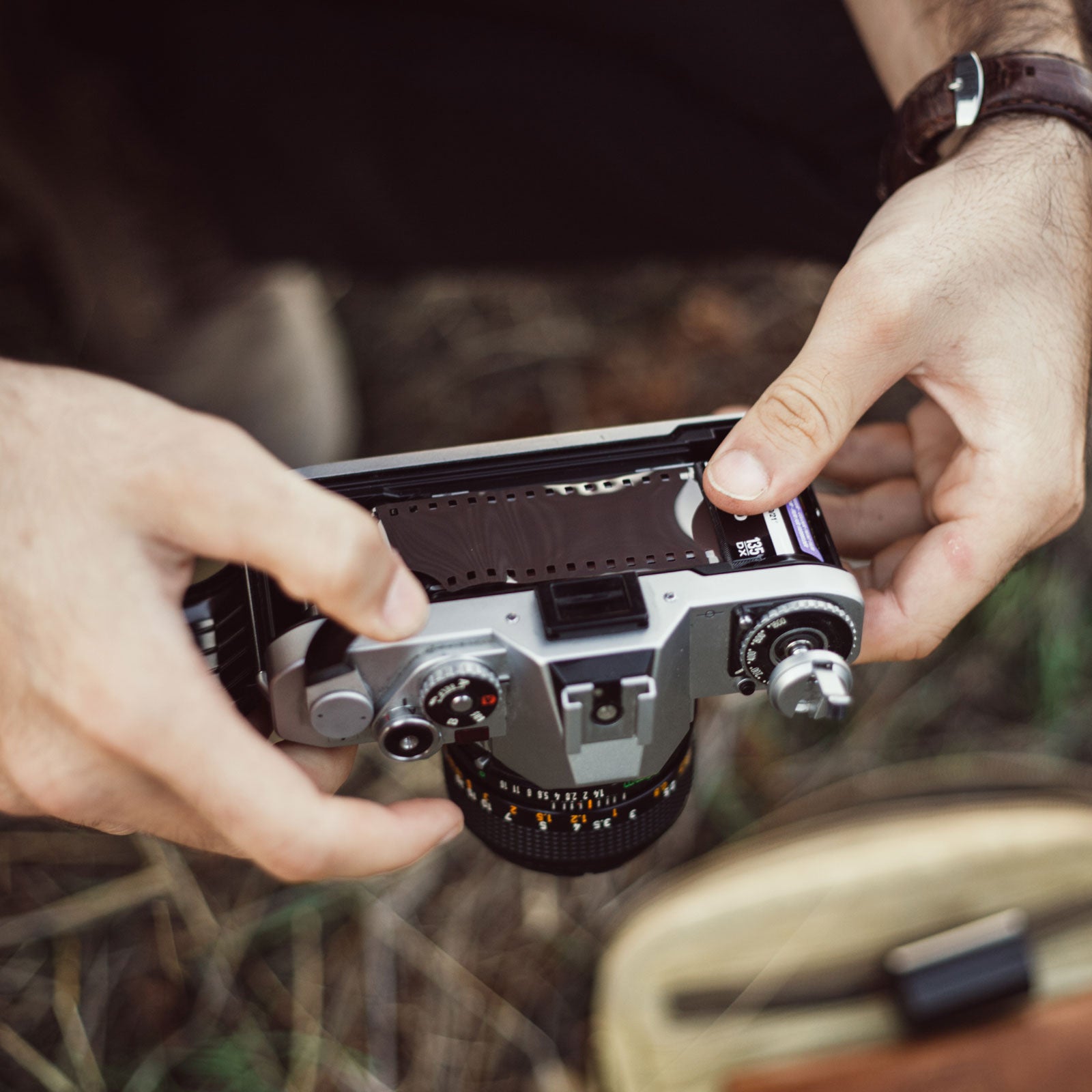We’re currently living in a digital-photography golden age. Sony, Canon, and Nikon are duking it out for dominance in the mirrorless-camera world, pumping out models that pack insane features and resolution into lightweight bodies. Meanwhile, Apple and Google are the big players in the smartphone market, developing cameras small enough to slip into your pocket but powerful enough to capture beautiful portraits and stunning 4K video.
So, you might ask, why would anyone even think about shooting with old-school film these days? The stuff is finicky and has to be developed in a time-consuming process, delaying our now accustomed instant gratification of seeing photos immediately. But despite those drawbacks, film has stuck around—and it will continue to hang on because it maintains some important advantages over digital.
First, film forces us to slow down. Last year, the world shot an estimated , mostly via smartphones. With such capable cameras in our pockets, we don’t think, we simply react. That’s fine when you’re snapping funny pictures of your cat or chasing Instagram likes, but when you’re trying to capture a truly important moment worthy of the mantelpiece it’s necessary to be more methodical. Film rolls, which are often limited to 24 or 36 exposures (compared to the hundreds of files you can cram onto a large SD card), demand that we ask ourselves an increasingly novel question: “Is this photo worth shooting?” Doing that makes us consider the lighting, composition, and timing. That kind of deliberation is valuable. , the best photographs have to be visualized before the shutter is pressed.
Second, film creates an aesthetic that, at least currently, can’t truly be replicated. You can apply all the Insta filters you want, but no electronic file can match the feel of a gorgeous , the grit of a , or the tone of a saturated . These days, digital shots are more beautiful than ever thanks to increased resolution. But film still captures light better, retaining a soulfulness and artistic quality that can be created only through exposing a negative and then developing it in a bath of specialized chemicals.
Finally, film will force you to hone your photography skills. With smartphones, it’s point and shoot; the device makes most of the judgments for you, aside from maybe your tap on the screen to focus on a subject’s face. Same with digital mirrorless cameras—they can be controlled manually, but it’s easier to throw them on automatic mode and go. Buy an old-school analog film model, however, and you have no choice but to learn how all the components of the machine work together. You’ll figure out how to choose the proper film ISO to start, then come to understand how the aperture and shutter speed work in conjunction to create the right exposure. It’s difficult to juggle all those initially, but eventually it becomes second nature. And when you go back to your mirrorless camera, or even your cell phone, you’ll be able to apply your new skills to truly maximize their potential.
So how do you go about shooting film in a world dominated by digital? Luckily it’s still easy to find film and compatible cameras online. B&H, the country’s leading photography store, has a rich selection. I recommend starting with something like the , a black-and-white film that’s fairly forgiving as you start to hone your manual chops (read: your picture won’t be ruined if you don’t have the settings perfectly dialed). If you’d rather not browse for cameras, head to Amazon and search “.” It’s , and there are thousands of used ones floating around in decent shape. You’ll get a great shooter matched with a sharp and fast 50-millimeter lens for about $180.
When you’re ready to develop your film, you can it take it to a local Walgreens if you just want basic prints to see how your pictures turned out. But if you’ve spent lots of time snapping meticulous shots, you’ll want to send your film somewhere more professional, like in Los Angeles. Yes, this requires you to mail the film, then wait for the negatives, prints, and/or digital scans of your film to be sent back. And yes, all this will be more expensive. But when you get a gorgeous print of an important moment—something so special you’ll want to hang it on your wall and not just slap it on Facebook—the wait and the process will have been worth it.


